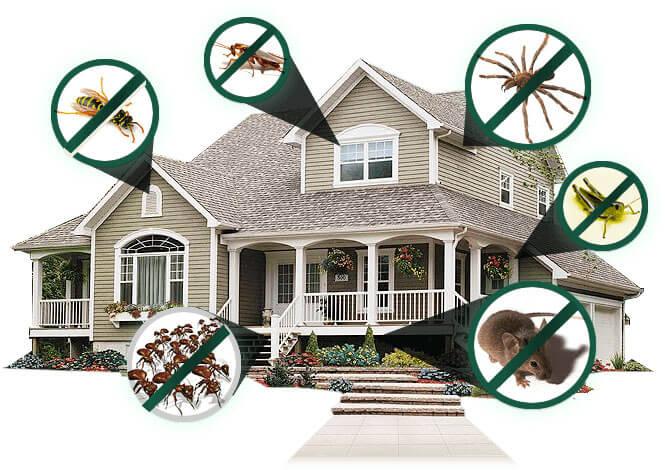A1 Bed Bug Exterminator Charlotte - Specialized Bed Bug Elimination
Wiki Article
Bed Bug Therapy Break Down: Contrasting Chemical Vs. Non-Chemical Solutions
In the realm of pest control, particularly when managing the persistent problem of bed bugs, the choice between chemical and non-chemical therapy solutions can be an essential one. Both strategies provide distinctive benefits and drawbacks, affecting aspects such as effectiveness, security factors to consider, and total price. By taking a look at the nuanced information of each method, a clearer understanding of which course to pursue in dealing with a bed insect problem can be achieved.Performance of Chemical Therapies
Chemical therapies for bed insect infestations have actually been widely recognized for their rapid and potent efficacy in eradicating these parasites. When taking into consideration the efficiency of chemical treatments, it is essential to understand that they can provide a complete and quick remedy to a bed insect problem.In addition, chemical therapies have the advantage of supplying residual impacts, suggesting that they can remain to eliminate bed insects even after the initial application. This recurring action is specifically valuable in combating any kind of possible re-infestations. Additionally, the quick action of chemical treatments can bring alleviation to people facing severe bed insect problems, allowing them to gain back control of their living spaces promptly.
Safety Worries With Chemical Solutions
One crucial element that needs cautious factor to consider when using chemical remedies for bed insect therapy is guaranteeing the security of passengers and the atmosphere. While chemical treatments can be efficient in removing bed insects, they might present threats otherwise taken care of effectively. One of the key safety and security worry about chemical remedies is the potential injury they can create to human wellness. Direct exposure to specific chemicals made use of in bed pest treatments can cause respiratory system problems, skin irritation, or other damaging responses, especially in individuals with pre-existing problems or level of sensitivities. Furthermore, incorrect application or dose of chemical pesticides can cause hazardous residues sticking around in the treated area, presenting lasting health risks to occupants.Moreover, the ecological influence of chemical services is an additional considerable factor to consider. Some pesticides made use of in bed insect therapies may be hazardous to valuable pests, wild animals, and ecological communities if they leach into the dirt or water systems. It is important to make use of chemical therapies sensibly, adhering to security standards, and considering much less harmful options to alleviate these risks and guarantee the risk-free and efficient management of bed insect problems.
Benefits of Non-Chemical Techniques
Considering the potential safety issues and ecological influence connected with chemical services for bed pest treatment, pop over to this web-site checking out non-chemical techniques offers a promising choice with several distinct benefits. Non-chemical methods provide a more secure option for households, particularly those with kids, people, or animals conscious severe chemicals. These strategies remove the dangers of direct exposure to poisonous materials, minimizing the capacity for negative wellness results. In addition, non-chemical therapies are eco-friendly, as they do not add to air or water contamination, making them a lasting option for insect control.Additionally, non-chemical remedies can be effective in targeting bed bugs, consisting of hard-to-reach locations where chemical therapies may not pass through - A1 pest control charlotte nc bed bugs. Approaches such as warm therapy, vacuuming, heavy steam cleansing, and bed mattress coverings provide complete removal without the usage of damaging chemicals.
Limitations of Non-Chemical Treatments

In addition, non-chemical therapies frequently call for numerous applications to attain news successful elimination. This can be time-consuming and may not constantly ensure complete elimination of all bed insects and their eggs, particularly in hard-to-reach or hidden areas.
Moreover, the success of non-chemical therapies greatly depends on correct implementation and thoroughness, which can be challenging for people without specialist experience. Insufficient application of non-chemical techniques might cause incomplete removal, resulting in persistent infestations and the requirement for extra therapies.
As a result, while non-chemical treatments have their benefits, it is necessary to recognize these limitations and consider them when identifying the most efficient approach for managing bed pest problems.
Price Contrast: Chemical Vs. Non-Chemical Options
Offered the limitations linked with non-chemical treatments, an important facet to assess in the context of bed pest management is the price comparison in between chemical and non-chemical options. In comparison, non-chemical treatments like warmth treatment or vapor can be more pricey, with costs ranging from $1,000 to $6,000 for a whole home. While the initial expense of chemical therapies may appear reduced, multiple therapies might be required to fully get rid of the invasion, possibly increasing the total expense.Verdict

Taking into consideration the potential use this link security problems and environmental effect connected with chemical services for bed pest treatment, checking out non-chemical methods offers a promising option with several distinct advantages.Given the restrictions connected with non-chemical therapies, a necessary facet to review in the context of bed insect administration is the price contrast in between chemical and non-chemical options. In comparison, non-chemical therapies like heat treatment or steam can be a lot more pricey, with expenses varying from $1,000 to $6,000 for a whole home. While the first price of chemical therapies might seem lower, numerous therapies may be needed to completely eliminate the problem, possibly boosting the general cost.In verdict, when comparing chemical and non-chemical bed insect treatment options, it is important to take into consideration effectiveness, security, advantages, restrictions, and expense.
Report this wiki page